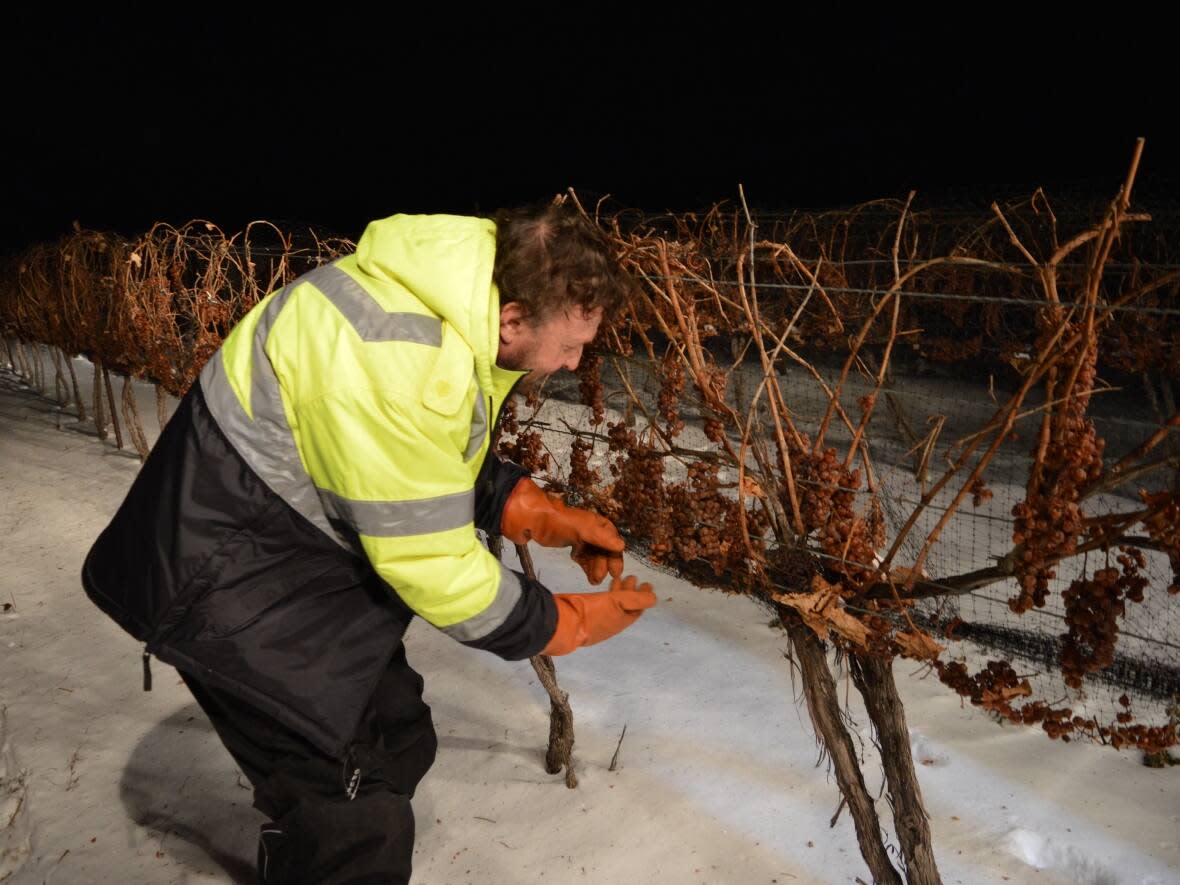Ontario sees dramatic drop in icewine production over last 5 years

Icewine production in Ontario has been steadily dropping over the last five years, with dramatic decreases occurring in 2019 and 2022, according to VQA Ontario — the body that regulates the wine industry in the province.
According to VQA Ontario's latest report, the amount of icewine produced in Ontario dropped from 502,082 litres made in 2021 to 111,614 litres made in 2022.
In 2018, icewine made up about three per cent of the wine produced in Ontario but has decreased to less than half of a per cent of wine produced in 2022.
VQA Ontario's director of communications and wine standards Katherina Radcliffe said the number of approved producers of icewine dropped from 41 producers in 2019 to 10 producers for both 2020 and 2021.
She said fewer wineries chose to produce icewine during those years and there were few applications to become an approved producer.
Ice wine production in Ontario, 2018-2022
Despite the drop in production however, one Niagara winery owner is optimistic this year's low grape harvest will produce higher quality icewine, which will in turn see the product regain popularity in international markets.
According to Jamie Slingerland, director of viniculture at Pillitteri Estates Winery in Niagara-on-the-Lake, Ont., unpredictable climate patterns this winter will likely lead to a lower harvest, but he he expects the quality of this year's icewine vintage to be of a higher quality.
'You're getting a lot more intensity'
Slingerland said the unexpected cold fronts, snow storms and warm days have dried out a significant percentage of grapevines while also making harvesting them harder to plan.
Icewine grapes are usually harvested in January — later than other grapes, which are harvested in the fall — and are more susceptible to changing weather patterns.
"I think what happened is the dehydration in the grapes left behind concentrated sugars and you're getting a lot more intensity," Slingerland told CBC Hamilton.
"Regarding the quality, I think it's going to be exceptional."

Slingerland believes "it's a banner year in regards to quality," even though quantity is dramatically reduced.
He said the grape harvest is expected to be one of the smallest in the last 20 years.
But it was still a good year for making icewine, he said.
Slingerland said during the COVID-19 lockdowns, he saw a 90 per cent drop in sales, but he expects a slow return to pre-pandemic revenues with the increase in icewine quality.
Producing icewine a high risk: Niagara vineyard
While Slingerland is optimistic about the future of icewine, the owner of Cool Vineyards in Niagara, Dustin Gill, is significantly less so.
Gill told CBC-Hamilton on Tuesday that he had been growing and harvesting icewine grapes for a decade before deciding against it for 2023.

He said the demand for icewine on the international market is much lower than it was in previous years and COVID-19 lockdowns severely cut into his revenue.
"It's a high risk, high reward kind of proposition," he said. "Usually the risk is just weather-based and timing, but it seems like the last couple of years the risk has been what governments are open during the pandemic."
Drop in revenue from Asian countries
Gill said the majority of icewine revenue comes from international sales, where the "dessert wine" is often given as gifts. He said when the lockdowns began in 2020 revenue from Asian countries such as China and Vietnam plummeted.
Slingerland is now one of the 10 remaining approved Ontario icewine producers and said production and sales are directly linked to Ontario's state of tourism.
He said Niagara's vineyards are popular tourist attractions and 50 per cent of his sales were from walk-in customers. Slingerland said when lockdowns began and Asian countries imposed stronger import restrictions his icewine revenue dropped significantly.
President of Ontario Craft Wineries Richard Linley told CBC Hamilton that while there was a change in purchasing patterns during the pandemic, icewine sales in the Liquor Control Board of Ontario (LCBO) have since recovered.
"We're back on track," he said.


